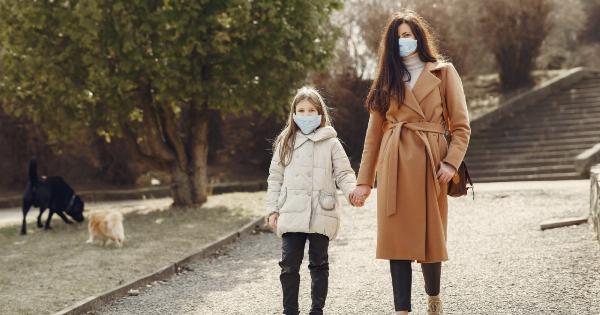Mouth Breathing and Its Effects on Your Child’s Well-being
Mouth breathing is a common habit seen in many children. While it may seem harmless, prolonged or chronic mouth breathing can have significant effects on a child’s overall well-being.
In this article, we will explore the various aspects of mouth breathing and how it can impact your child’s health.
Causes of Mouth Breathing
Mouth breathing can be caused by various factors, including:.
- Nasal congestion or allergies
- Enlarged tonsils or adenoids
- Deviated septum
- Chronic sinusitis
Physiological Effects of Mouth Breathing
Mouth breathing can have several physiological effects on your child’s body:.
- Insufficient oxygen intake: When breathing through the mouth, the air bypasses the nasal passages, which are responsible for filtering and warming the air. This can result in inadequate oxygen intake, leading to tiredness, fatigue, and poor concentration.
- Orthodontic issues: Mouth breathing can lead to improper alignment of teeth and jaw development, resulting in malocclusion and other orthodontic problems.
- Facial structure changes: Chronic mouth breathing can affect the growth of facial bones, leading to a long, narrow face, sunken cheeks, and a high palatal vault.
- Dental problems: Mouth breathing can contribute to dry mouth, which increases the risk of tooth decay, gum disease, and bad breath.
Effects on Sleep Quality
Mouth breathing can significantly impact your child’s sleep quality:.
- Snoring: Mouth breathers often snore due to the increased air turbulence caused by mouth breathing.
- Sleep apnea: Chronic mouth breathing can contribute to sleep-disordered breathing, including obstructive sleep apnea. This can result in restless sleep, daytime sleepiness, and poor academic performance.
Speech and Language Development
Mouth breathing can affect your child’s speech and language development:.
- Articulation difficulties: Open-mouth posture can affect the tongue and lip movements required for clear speech, leading to articulation problems.
- Language delays: Children who breathe through their mouths may have difficulty with oral motor skills, which can impact their language development.
Behavioral and Emotional Impact
The effects of mouth breathing are not limited to physical health but can also have behavioral and emotional consequences:.
- Restlessness and inattention: Inadequate oxygen intake can lead to behavioral issues such as restlessness, poor concentration, and difficulty focusing on tasks.
- Low self-esteem: Children with noticeable facial changes due to chronic mouth breathing may experience low self-esteem and confidence.
- Social difficulties: Speech difficulties resulting from mouth breathing can affect a child’s ability to communicate effectively, potentially leading to social isolation and difficulties in forming relationships with peers.
Treatment Options for Mouth Breathing
The treatment for mouth breathing depends on the underlying cause. It may include:.
- Nasal decongestants or allergy medications to address nasal congestion
- Removal of tonsils and adenoids if they are obstructing the airway
- Surgical correction of a deviated septum
- Orthodontic intervention to address malocclusion
- Behavioral modification techniques to encourage nasal breathing
Preventing Mouth Breathing
While it may not be possible to prevent all cases of mouth breathing, there are steps you can take to encourage nasal breathing in your child:.
- Ensure a clean and allergen-free sleeping environment
- Encourage good oral hygiene to reduce the risk of dental issues
- Promote regular exercise and physical activity to improve overall respiratory function
- Seek early intervention for any underlying conditions contributing to mouth breathing
Conclusion
Mouth breathing can have detrimental effects on a child’s overall well-being, including physical, psychological, and social consequences. Identifying the underlying causes and seeking appropriate treatment is essential to mitigate these effects.
By encouraging nasal breathing and addressing any related issues, parents can help ensure their child’s optimal health and development.






























